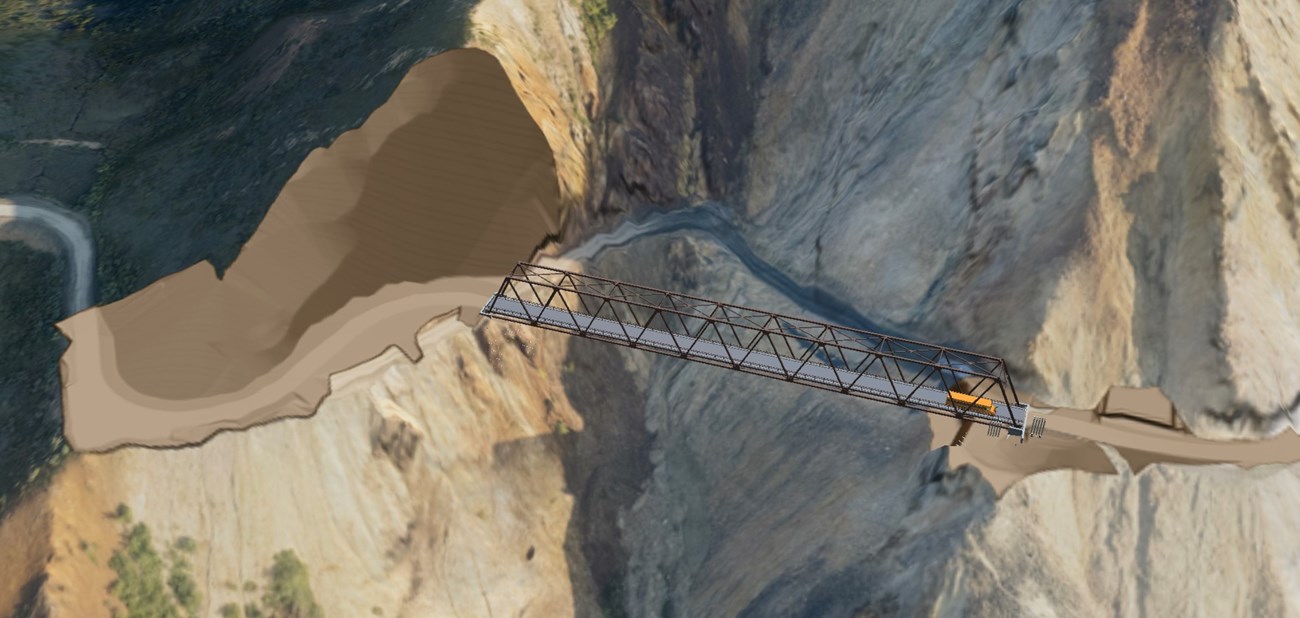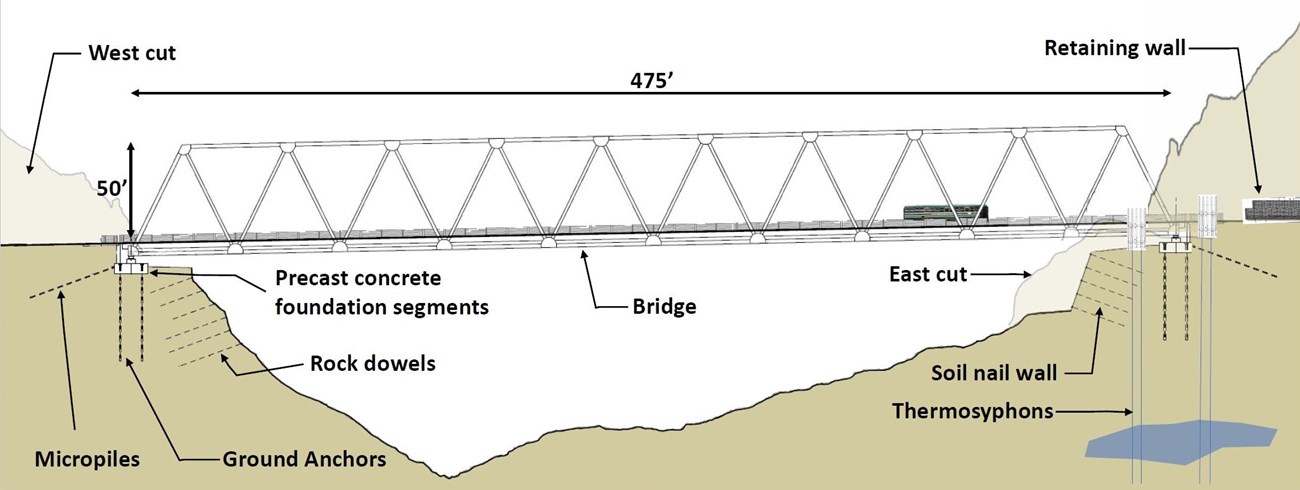|
April 2025 Update: The construction crews are back in the park for the 2025 season! In late March, they plowed snow and set up their housing areas in Igloo and Teklanika, and they plan to move into the camps full time by mid-April. By the end of the month, they will be on site at Pretty Rocks to resume steel erection of the bridge truss and to prep the ramps for the cranes that will be used to help launch the bridge later this summer. The first four bays of the bridge truss were completed at the end of the 2024 season, so they will pick up where they left off and add the remaining 6 bays to the structure this spring. Things are progressing better than expected so far, and we're still on track for a mid-summer 2026 project completion, which will allow NPS to use the remainder of that season to work on any necessary repairs to the western half of the Park Road and take care of deferred maintenance of west district facilities. We expect the full length of the road to be open and all bus services to resume in 2027. Until then, visitors can still take a transit or tour bus out to the East Fork area at Mile 43 between May 20 and September 12, 2025. Anyone traveling along the Park Road this summer should expect to encounter some construction traffic. Look back through the Pretty Rocks Construction blog for photos and details on past progress. Starting in May, we will post new updates and photos on a weekly basis during the construction season. 
Since late August 2021, a portion of the Denali Park Road near Polychrome has been displaced by the Pretty Rocks Landslide (mile 45.4), cutting off vehicular access to popular visitor destinations and facilities including Polychrome Overlook, Toklat, Eielson Visitor Center, Wonder Lake, and Kantishna. Check the current conditions of the Park Road and visitor services. Read more about the science and monitoring of the Pretty Rocks Landslide and other geologic hazards. 
NPS Photo 
NPS Photo Project OverviewThe Federal Highways Administration (FHWA), in collaboration with the National Park Service (NPS), developed the Polychrome Area Improvements plan to restore reliable road access west of Pretty Rocks. The plan addresses several geologic hazards in the Polychrome area (Mile 44–46) that threaten public safety and infrastructure, and includes the construction of a bridge to span the Pretty Rocks Landslide. Funding for the bridge was secured through a combination of Bipartisan Infrastructure Law dollars, additional Federal Lands Transportation Fund dollars, and 2023 Disaster Relief Supplement funding. The construction contract was awarded in January 2023 and work began in Summer 2023. Due to the road closure, buses will continue to travel no farther than mile 43 of the 92-mile Park Road and access to Kantishna inholdings will be primarily by air until the bridge is completed. 
Source: BGC and Jacobs Engineering Project Includes:

Source: NPS and Jacobs Engineering NEPA and NHPA ComplianceThe National Environmental Policy Act (NEPA) mandates an environmental assessment of any proposed federal action that has the potential to “significantly affect the quality of the human environment." Section 106 of the National Historic Preservation Act (NHPA) requires that federal agencies identify and assess the effects its actions may have on historic properties and consider public views and concerns about historic preservation issues when making final project decisions. Compliance with the NHPA is conducted concurrent with, but as a separate process to, the NEPA compliance process. Environmental and cultural compliance for the Polychrome Area Improvements project was formally initiated in October 2021 and was completed in March 2022:
The NPS contracted an environmental consulting firm (AECOM) to prepare the Environmental Assessment (EA), which considered the environmental consequences of a “no action alternative” (no new bridge and the road remains closed) and an “action alternative” (construct Pretty Rocks Bridge and Polychrome Road Improvements). Prior to the development of the EA, the NPS consulted with federally recognized Tribes, Alaska Native Corporations, State and local governments, and the State Historic Preservation Office. The NPS also hosted two virtual public meetings in October 2021 to identify and document specific concerns, issues, and potential impacts of both alternatives. Issue topics analyzed in the EA included geology, socioeconomics, visual resources, visitor use and experience, noise / soundscape, wildlife, wetlands and vegetation, cultural resources, and wilderness. Following the publication of the EA in January 2022, two additional virtual public meetings were held to discuss the analysis and provide information to aid the public in reviewing and commenting on the compliance document. After careful consideration of resource impacts, consultation with stakeholders, and review of public comments, the NPS concluded that the Polychrome Area Improvements project would not have a significant effect on the environment. The Finding of No Significant Impact (FONSI) was approved by the NPS Alaska Regional Director and released to the public in March 2022. How Can I Get Involved?Learn about other plans and become familiar with the Denali Planning Portfolio. Check the NPS Planning, Environment, and Public Comment (PEPC) website for documents available for review and comment. |
Last updated: April 14, 2025
